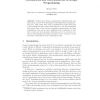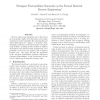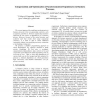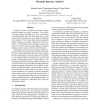848 search results - page 36 / 170 » Understanding Obfuscated Code |
CPAIOR
2005
Springer
14 years 2 months ago
2005
Springer
Creating good integer programming formulations had, as a basic axiom, the rule “Find formulations with tighter linear relaxations”. This rule, while useful when using unsophist...
WCRE
1995
IEEE
14 years 12 days ago
1995
IEEE
Reverse engineering of program code is the process of constructing a higher level abstraction of an implementation in order to facilitate the understanding of a system that may be...
ICDE
2007
IEEE
14 years 10 months ago
2007
IEEE
requirement. Furthermore, programming using sequence constructs normally produce nested structures and The current approachfor modeling synchronization in scattered code, especiall...
USENIX
2007
13 years 11 months ago
2007
Spyware is a class of malicious code that is surreptitiously installed on victims’ machines. Once active, it silently monitors the behavior of users, records their web surfing ...
VEE
2012
ACM
12 years 4 months ago
2012
ACM
Process-level virtualization is increasingly being used to enhance the security of software applications from reverse engineering and unauthorized modification (called software p...




